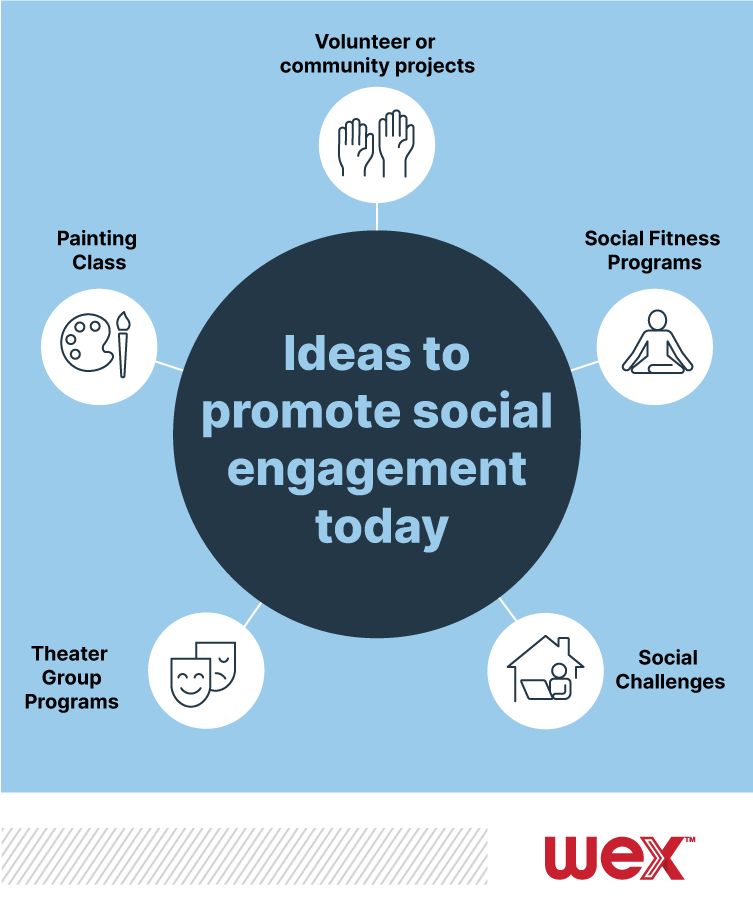Stay connected
Subscribe to our health benefits blog and follow us on social media to receive all our health benefits industry insights.

“I feel socially awkward,” one HR manager at a major medical supply company said at the beginning of a virtual meeting as she described her first few days in the office without having to wear a mask. “It’s like that first day of high school as an awkward teenager. I don’t know how to interact with people comfortably anymore. Should I shake hands? Am I standing too close? Should I still wear a mask? It just feels so weird.”
Unfortunately, her reentry anxiety and uneasy experience are not uncommon today as mask mandates are lifted, and more and more employees return to the office. It’s a far cry from the progress many companies made in creating a culture of employee wellness just a few short years ago.
The stark reality is that the goal post has shifted for HR professionals. It’s time to reimagine what employee social wellness means during and after a pandemic, and how to help your people find their way back to health and happiness as they interact with their work community again.
Drive wellness
that works
Get your guide.
In many ways, the last few years have been a setback for employee wellness as we swung into safety mode, with most companies operating mainly with a work-from-home (WFH) model. Social isolation, inactivity, and stress mixed to create a potent and intoxicating cocktail that has left us all with a bad hangover. According to Business.com, 19 percent of remote workers struggle with loneliness.
The good news is that, with the worst hopefully behind us, HR professionals have a once-in-a-lifetime opportunity to start fresh and craft social wellness strategies and programs that can have an enormous impact on their valued — yet shell-shocked — workforce. With the darkness fading, these programs can shine brighter and are more important than ever today, leading to greater engagement and teamwork.
So, what’s the best approach to addressing the challenges inherent in promoting social wellness with employees? At this stage in the pandemic, with the “all clear” signal still to come, many companies are in hybrid mode of WFH and office time. Since there are likely many more virtual meetings to come, try to prioritize some element of social interaction.
You could spend five minutes at the start of a meeting engaging participants in a fun sharing activity. For instance, have participants pick an item nearby and tell the group its meaning or any interesting story behind it. Ask employees to share recent family, pet or vacation photos in the chat.
It’s also important for managers to strengthen relationships with their direct reports and to make them feel supported. Managers can schedule monthly time with their team members for an unstructured, one-on-one chat. Position these sessions as a “safe space” to voice concerns or simply have a pleasant conversation about how things are going (make sure this doesn’t morph into an assessment or evaluation).
As we look to the (hopefully) near future where the workplace normalizes, there will be many more opportunities for HR departments to help their employees achieve social wellness and bolster team camaraderie. Opportunities to promote social engagement can include:
The last few years have been the most challenging time for HR professionals. But, with a little creativity and strategic thinking, you can elevate social wellness to new heights, creating an engaged and collaborative workplace culture.
Want more ideas on boosting social engagement in the workplace? Check out our graphic below and subscribe to our blog!

The information in this blog post is for educational purposes only. It is not legal or tax advice. For legal or tax advice, you should consult your own counsel.
Subscribe to our health benefits blog and follow us on social media to receive all our health benefits industry insights.